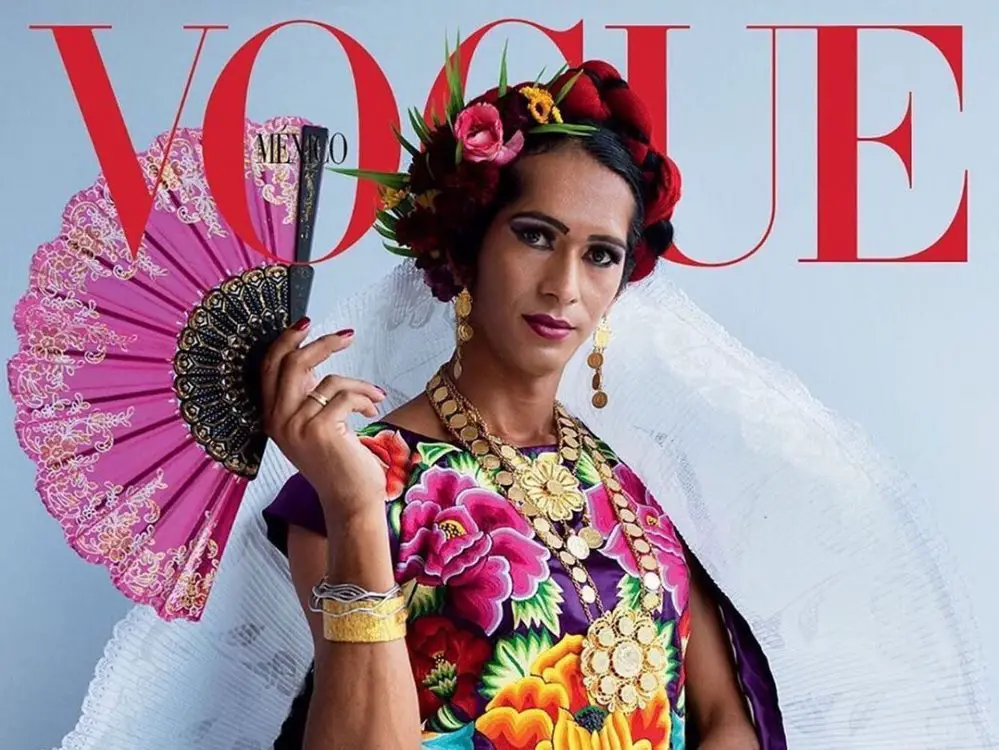What does it mean to be nonbinary? To simply identify as a woman with female parts and a man with male parts is a privilege in modern society. The world is made for traditional gender roles. They are expected and accepted, and it’s only been over the course of the last decade that the process of making room in Western culture for those who identify outside of the rigid binary system has begun to catch fire. Our growing need to understand the spectrum of gender and sexuality is being reflected in our language.
While some nonbinary terms have existed for decades, others have evolved in use and meaning. This is fantastic news, but the Western world is still late to the game. Interestingly, many traditional indigenous cultures have created room for gender expression within their culture, that according to our Western tools of explanation would equate to gender fluidity, transgenderism or third-genderism.
The occurrence of this proves something that the community has always argued, that one’s gender identity has always been more excitingly diverse than the boy/girl dichotomy. And that for these people, being defined as anything other than normal is proof of an inherent problem, even an intentional deficiency in our societal norms rather than a dysfunction of the individual.
Notably, the media, as of late, is contributing to the visibility and normalization of nonbinary individuals. Here and there, media is not just talking about transgenderism or third gender, but seemingly celebrating it, which was demonstrated by both the British and Mexican editions of Vogue, both of which featured their first openly transgender model, Estrella Vasquez, who belongs to an indigenous Mexican muxe community. Like many models, she adorns the cover, poised and beautiful. However, what she stands for is incomparably impactful.
Vogue knows what they are doing by adopting this progressive stance on the subject. For some, it’s shocking, and for others, it’s commendable, but regardless of the reaction, the move invites attention, which oftentimes is the first step toward normalization. Judging by the current climate, this reality seems to exist in the distant future. However, Western culture should not be so quick to place its perspective of the transgender struggle onto Vasquez.
In fact, labeling the model as transgender is arguably incorrect. She is a muxe and belongs to one of the biggest — if not the biggest — muxe communities in Mexico; the community has crafted their own identity, which is cultivated, lived out and defined by indigenous Mexican society. Sometimes considered to be somewhat gender-fluid, considering that some muxe might choose to appear traditionally masculine, they frequently dress and live as women, often being respected as caretakers in the community.
It would be incorrect to say that those that identify as muxes do not face social stigma, discrimination and economic hardship though. There are many community members, especially fathers, who struggle with idea of their muxe children. Nevertheless, it is generally accepted by most that one is born as a muxe, set in place by predetermined characteristics that exist outside of one’s control.
Similarly, māhū of Polynesia have also attracted public attention due to a series of portraits by photographer Namsa Leuba. Māhū are born biologically male and tend to not conform to either male or female identities. Their roles in the community are often spiritual in nature. Relatedly, māhū face a confusing history of misinterpretations and misusage of language to describe them by the Western world; notably, one Hawaiian dictionary incorrectly equated māhū to hermaphrodites.
Even with attempts to be progressive thinkers, Western language imposes a limitation. Terms like third gender and transgender do not truly encapsulate what it means to be māhū or muxe and might only be appropriate when discussing those in a Western context who do not also identify with an alternative identity, concept or explanation.
Perhaps one of the most well-known indigenous nonbinary identities are two-spirited individuals. In a video posted by the YouTube channel “them,” Geo Neptune explains that Two-Spirit is “An umbrella term that bridges indigenous and Western understandings of gender and sexuality … there are many understandings of Two-Spirit and each is nation-specific. The term was intentionally introduced by native people with the goal of finding common ground and help educate about traditional teachings in a contemporary context.”
Nicholas Metcalf, a two-spirit Lakota offers a different explanation:
“In order to understand this concept of Two-Spiritedness, I need you to step away from American culture and how you view and identify gender and sexuality and all those sorts of things,” Metcalf said. “Folks need to step into an indigenous worldview to understand that everything is sacred, and everything has use and the creator makes no mistake”.
In contrast to contemporary stigma of queer individuals in the Western world, where nonbinary, non-heterosexual individuals are still often labeled as sinful and blasphemous, in other cultures, they might be religiously or spiritually celebrated. Many nonbinary individuals hold special spiritual roles and are seen as essential components of religion and spirituality for the community; it is not uncommon for these people to be seen as having a spiritual advantage in their communities.
Before their contact with the Western world, māhū were part of religious and holy ceremonies in ways that other women were prohibited from. Two-Spirited individuals and their roles are considered sacred, religious and ceremonial, and the Hijra of India have a place in Hindu mythology, despite living mostly as social cast-outs.
Western cultures should be careful not to idealize all nonbinary norms in other cultures, and it has been argued that many nonbinary identities in traditional cultures are actually founded on conventional gender roles. Writer Cecilia Lepine argues that it is more common for men that take on traditionally-accepted female activities and appearance to be “downgraded,” forced to become something other than male — an experience that is not as prevalent as biological females being classified as something other than female. She argues that some nonbinary identities are imposed on the person by the larger culture, and that this does not fit into the Western idealization of transgenderism or a third gender as being something individual.
In case of Hijra’s, today they are rarely seen as sacred; what defines them most strongly is their outcast status. Regrettably, a disproportionate amount of the population survives as prostitutes, but India now has a third option besides female and male to choose from on official documents — transgender. This paradox, not unique only to the Hijra culture and to India, is sometimes interpreted as one of the remnants of the colonial Christian world’s influence and interference into traditional indigenous cultures: a muddling of beliefs, roles and gender identities, as well as methods for interpreting and arranging them in society.
As the cultural stigma begins to fade from the public eye, the media is beginning to celebrate and reflect a larger range of nonbinary identities, which simultaneously opens the window into cultures that made a home for these identities in a way difficult for Western culture to fully understand. In order to effectively grapple with gender identity concepts, Western cultures must attempt to view the world through the lens in which it was created, the context from which it was formed, the culture that it exists in.
Some cultures are struggling with their own indigenous understanding of the gender spectrum, battling to keep the integrity of their traditional perspectives intact, battling with the effect that the binary system imposes on the world. This does not mean that we cannot still uncover the foundational views that allow for a third gender in the first place.
At the same time, in order to understand each solitary gender concept within its own context, people must not fall into the trap of believing that having a third gender equals a progressive culture based solely on free choice. This projection will only encourage further ignorance. Nonetheless, the ever-increasing visibility of the nonbinary spectrum of identity and sexuality is exciting. But, above all else, people must continue to listen and learn.
















